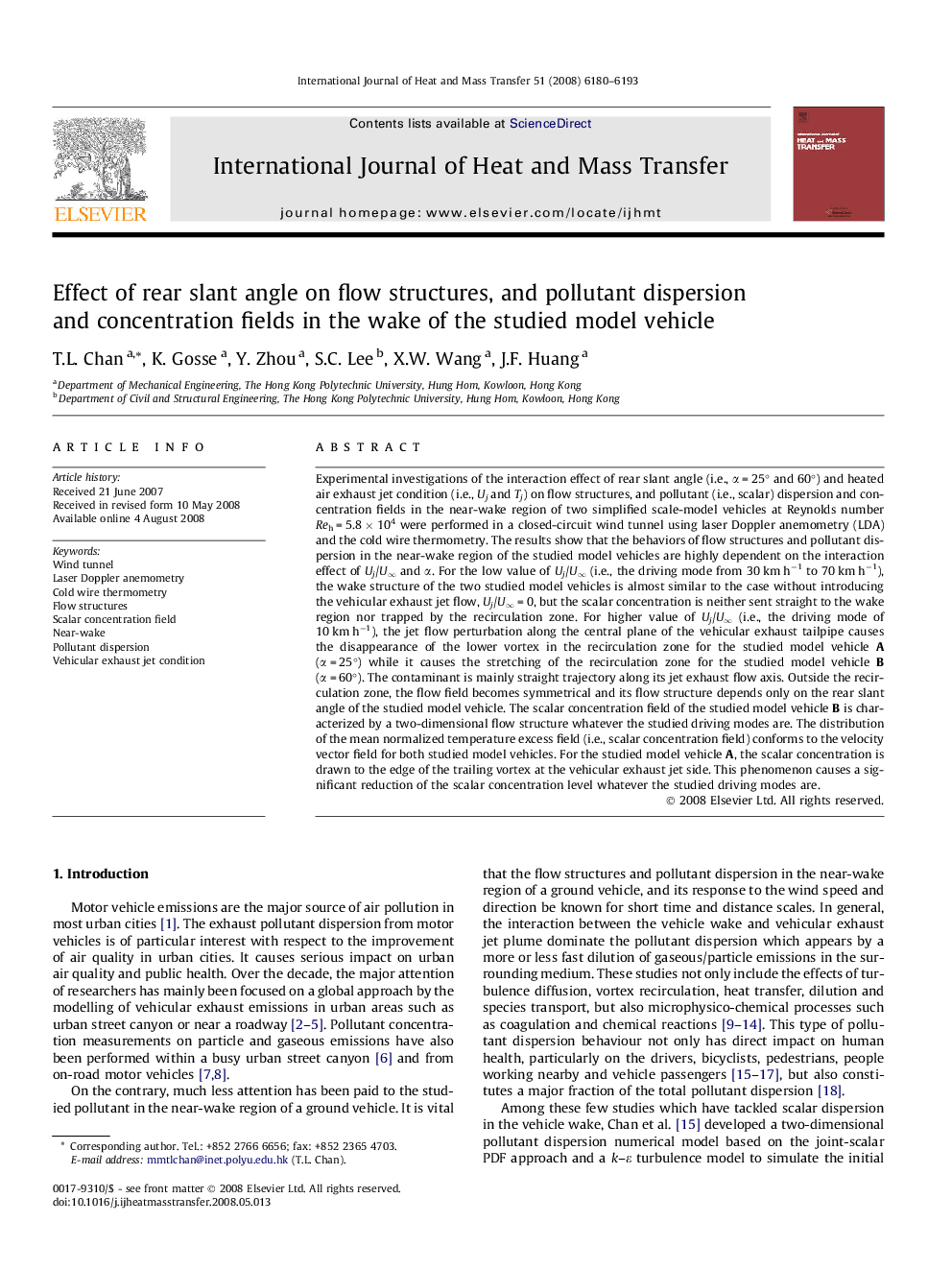| کد مقاله | کد نشریه | سال انتشار | مقاله انگلیسی | نسخه تمام متن |
|---|---|---|---|---|
| 660058 | 1458140 | 2008 | 14 صفحه PDF | دانلود رایگان |

Experimental investigations of the interaction effect of rear slant angle (i.e., α = 25° and 60°) and heated air exhaust jet condition (i.e., Uj and Tj) on flow structures, and pollutant (i.e., scalar) dispersion and concentration fields in the near-wake region of two simplified scale-model vehicles at Reynolds number Reh = 5.8 × 104 were performed in a closed-circuit wind tunnel using laser Doppler anemometry (LDA) and the cold wire thermometry. The results show that the behaviors of flow structures and pollutant dispersion in the near-wake region of the studied model vehicles are highly dependent on the interaction effect of Uj/U∞ and α. For the low value of Uj/U∞ (i.e., the driving mode from 30 km h−1 to 70 km h−1), the wake structure of the two studied model vehicles is almost similar to the case without introducing the vehicular exhaust jet flow, Uj/U∞ = 0, but the scalar concentration is neither sent straight to the wake region nor trapped by the recirculation zone. For higher value of Uj/U∞ (i.e., the driving mode of 10 km h−1), the jet flow perturbation along the central plane of the vehicular exhaust tailpipe causes the disappearance of the lower vortex in the recirculation zone for the studied model vehicle A (α = 25°) while it causes the stretching of the recirculation zone for the studied model vehicle B (α = 60°). The contaminant is mainly straight trajectory along its jet exhaust flow axis. Outside the recirculation zone, the flow field becomes symmetrical and its flow structure depends only on the rear slant angle of the studied model vehicle. The scalar concentration field of the studied model vehicle B is characterized by a two-dimensional flow structure whatever the studied driving modes are. The distribution of the mean normalized temperature excess field (i.e., scalar concentration field) conforms to the velocity vector field for both studied model vehicles. For the studied model vehicle A, the scalar concentration is drawn to the edge of the trailing vortex at the vehicular exhaust jet side. This phenomenon causes a significant reduction of the scalar concentration level whatever the studied driving modes are.
Journal: International Journal of Heat and Mass Transfer - Volume 51, Issues 25–26, December 2008, Pages 6180–6193